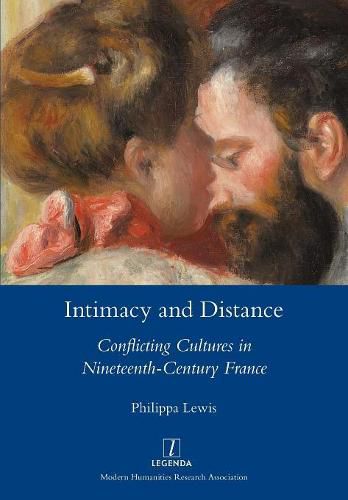Readings Newsletter
Become a Readings Member to make your shopping experience even easier.
Sign in or sign up for free!
You’re not far away from qualifying for FREE standard shipping within Australia
You’ve qualified for FREE standard shipping within Australia
The cart is loading…






This title is printed to order. This book may have been self-published. If so, we cannot guarantee the quality of the content. In the main most books will have gone through the editing process however some may not. We therefore suggest that you be aware of this before ordering this book. If in doubt check either the author or publisher’s details as we are unable to accept any returns unless they are faulty. Please contact us if you have any questions.
What do we mean when we talk about intimacy? And when did we begin to talk about intimacy? Rather than approach the concept as an age-old aspect of love, friendship or desire, Intimacy and Distance identifies the nineteenth century as a period in which intimacy and its lexicon came sharply to the fore. Drawing on a diverse range of literary and non-literary sources, Lewis makes a case for thinking historically about intimacy, and recognising its centrality to nineteenth-century reading and writing practices.
The book brings together both canonical and neglected writers, from Baudelaire, Flaubert, and Barbey d'Aurevilly to Sainte-Beuve, Eugene Fromentin, and Eugenie de Guerin. Looking beyond boundaries of genre, it analyses verse and prose poetry, diaries and narrative fiction, and arts journalism and travel writing. Lewis demonstrates not only the impact of the idea of intimacy on nineteenth-century French culture, but also the complex aesthetic and ideological conflicts it could incite.
Philippa Lewis is a Leverhulme Early Career Fellow at the University of Bristol.
$9.00 standard shipping within Australia
FREE standard shipping within Australia for orders over $100.00
Express & International shipping calculated at checkout
This title is printed to order. This book may have been self-published. If so, we cannot guarantee the quality of the content. In the main most books will have gone through the editing process however some may not. We therefore suggest that you be aware of this before ordering this book. If in doubt check either the author or publisher’s details as we are unable to accept any returns unless they are faulty. Please contact us if you have any questions.
What do we mean when we talk about intimacy? And when did we begin to talk about intimacy? Rather than approach the concept as an age-old aspect of love, friendship or desire, Intimacy and Distance identifies the nineteenth century as a period in which intimacy and its lexicon came sharply to the fore. Drawing on a diverse range of literary and non-literary sources, Lewis makes a case for thinking historically about intimacy, and recognising its centrality to nineteenth-century reading and writing practices.
The book brings together both canonical and neglected writers, from Baudelaire, Flaubert, and Barbey d'Aurevilly to Sainte-Beuve, Eugene Fromentin, and Eugenie de Guerin. Looking beyond boundaries of genre, it analyses verse and prose poetry, diaries and narrative fiction, and arts journalism and travel writing. Lewis demonstrates not only the impact of the idea of intimacy on nineteenth-century French culture, but also the complex aesthetic and ideological conflicts it could incite.
Philippa Lewis is a Leverhulme Early Career Fellow at the University of Bristol.